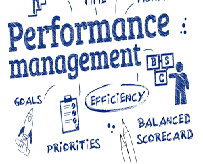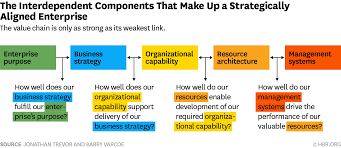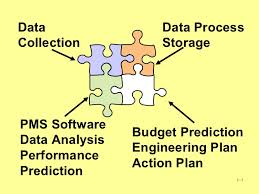Performance Management and Contingent Reward Order Instructions: I want the writer to reply on this essay:

Traditionally, the reward system only is provided to remunerate for the positions employees are holding according to what is stipulated in the job description as their pay, benefits, and incentives. Pay scheme is simply set with few salary scale to cover different ranges of performance. The salary adjustment was normally done at the end of the year according to their seniority at a certain percentage of their base salary instead of paying for employees’ work quality or performance.
Contingent pay (CP) in todays’ reward system maintain that individual is paid or rewarded based on how their performance with an amount called variable pay other than the base salary. It is found that contingent pay in the implementation of PMS is more effective in raising the quality of work when individual pay is directly linked to the reward system. Contingent pay system guided the organization to define effective performance clearly for employees at a different level and positions to understand what is needed and expected of them in respect of behavior and results in order to communicate strategic goals to the working levels by management. It guides the individual to change behavior that leads to high performance.
However, there is a sign of a decrease in the drive after implementation of contingent pay system for a certain period of time. This is because of the determinants of performance which are the declarative knowledge, procedural knowledge and motivation are not in place or insufficient. If the employee put the heart in doing their work with high motivation due to contingent pay scheme but without good procedural and declarative knowledge they may still fail. Contingent pay plans will have high motivation effect provided employees can see: a clear link between efforts and expectations; a clear link between their performance and rewards; and employees able to appreciate and value rewards represented to them. As mentioned in Aguinis (2012, p,267) motivation is constituted by meeting expectancy, instrumentality and valence conditions.
Other than motivation, declarative and procedural knowledge, there are other factors affecting CP plans. An organization CP plan may also fail: when PMS is not effective and poor; when the rewards is insufficient or insignificant to employee; when there is not enough support and accountability from the managers; when the extrinsic motivation exist at the expense of intrinsic motivation; when rewards for executives are disproportionately huge compared to those received by employees; when there is a folly of rewarding A while hoping for B. It is also important and critical that the CP plan blend with organization culture. The traditional culture or involvement culture of top-sown decision making and clear defined jobs such as piece rate, commissions and group incentives are seen to work well together with strategic business objectives.
In order to make rewards work CP plan shall: define and measure the criteria for particular rewards; ensure performance come before allocation of rewards; ensure all employees are eligible; make rewards visible, contingent, timely and reversible; also look into using nonfinancial rewards including challenge, responsibility, interesting and meaningful work. (Armstrong & Baron, 2004, p.103) mention ‘Non-financial motivation is provided by performance management through recognition, the provision of opportunities to succeed, skills development and career planning, and by enhancing job engagement and commitment.’
The other areas to look into to ensure effective implementation of reward system is knowing how to structure pay system. It can be classified into different categories of job based on their relative worth as in salary scale. Of course we also cannot overlook the process of job evaluation through data collection in relation to the skills, knowledge and abilities that are require for each job scope.
The new challenges faced in organization context during implementation of PMS are ethical and legal issues such as: employment at will which termination of employment; employers if not follow the performance management practice may be accused of negligent; employers can be blamed and sued for defamation if the employer makes a false statement; and organization can also be accused of negative impact or unintentional discrimination if the PMS has an unintentional impact of the minority or diversed workforce. As far as ethical alignment is concern, Mujtaba & Shuaib (2010, p.115) mention ‘individuals should be given resources, training, and the means of accomplishing results within defined linitations. Such limitations can be defined by a code of ethics or the values which the company has been guided by in its day-to-day operations.’ It is noted ethical behavior should be a critical criterion for high performance as it may damage company strong reputation and future in no time and it will affect the trust in customer which require long term repair and establishment. In one of our business unit with stringent corporate governance to scrutinize unethical business operation, due to high-level management unethical business practice, that business was under authority investigation. It is often than not unethical business operations involve higher management unethical behavior and inappropriate value rather lower level unethical act that trigger detrimental damage to reputation. Due to this unexpected act by the management the business operations has been stalled for months for investigation. The rebuilding of company reputable will take a while before customer gain confidence in this business unit again.
Performance Management and Contingent Reward References
Aguinis, H. (2012) Performance management, 3rd ed. Upper Saddle River, NJ: Pearson Prentice Hall.
Chapter 10, ‘Reward systems and legal issues’
Armstrong, A. & Baron, A (2004) Managing performance: performance management in action, 2nd ed. London: CIPD.
Chapter 7, ‘Performance management and rewards’, pp.103-114
Mujtaba, B, & Shuaib, S 2010, ‘An Equitable Total Rewards Approach to Pay for Performance Management’, Journal Of Management Policy & Practice, 11, 4, pp. 111-121, Business Source Complete, EBSCOhost, [Online] Available from: http://search.ebscohost.com.ezproxy.liv.ac.uk/login.aspx?direct=true&db=bth&AN=59258140&site=eds-live&scope=site (viewed 5 December 2015).
Performance Management and Contingent Reward Sample Answer
P.M. W.71
The contingent reward system is a motivation-oriented system used to reward those that achieve their identified objectives. It provides positive underpinnings for a job well done. This reinforcement measurement motivates personnel to efficiently complete their duties and accomplish their objectives in a timely fashion. Different from annual performance appraisals, the contingent reward system offers more frequent evaluation of the workers work with application rewards when qualified. To be efficient, the reward alternatives in this motivation mechanism should be therefore of interest to the personnel. If the rewards fail to capture the attention of the workers, the rewards will not offer productive motivation. In companies, commissions and monetary bonuses are the most used types of rewards. Nevertheless, other rewards may just be active. Rewards such as free memberships, trips, paid vacation days are considered productive reward aspects when utilized appropriated. As positive fortification, the contingent reward system should motivate the general required attitude. Not only must the personnel achieve the exigent goal, they must endorse and sustain the company’s metrics of required behavior. For example, the contingent reward program may reward sales persons with free airfare for surpassing the sales measure successively for numerous months. Nevertheless, the rewards program must apply to the sales person when the sales accounts fail to meet the firm’s quality needs. The reward program must be explicitly defined to ensure that all personnel comprehend what is needed to qualify. Even if the contingent reward program should be a structured one to be effective, the program should also be tailored and gratifying to capture the interest of the employees.
Performance Management and Contingent Reward References
Aguinis, H. (2012). Performance management, 3rd ed. Upper Saddle River, NJ:
Pearson Prentice Hall.
Armstrong, A. & Baron, A (2004). Managing performance: performance management in action, 2nd ed. London: CIPD
Mujtaba, B, & Shuaib, S 2010, ‘An Equitable Total Rewards Approach to Pay for Performance Management’, Journal Of Management Policy & Practice, 11(4) pp. 111-121, Business Source Complete, EBSCOhost, [Online] Available from:
http://search.ebscohost.com.ezproxy.liv.ac.uk/login.aspx?direct=true&db=bth&AN=5925 8140&site=ed -live&scope=site <(viewed 5 December 2015)>.












